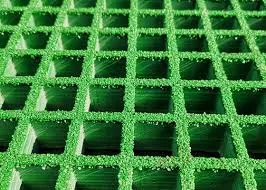
-
 Afrikaans
Afrikaans -
 Albanian
Albanian -
 Amharic
Amharic -
 Arabic
Arabic -
 Armenian
Armenian -
 Azerbaijani
Azerbaijani -
 Basque
Basque -
 Belarusian
Belarusian -
 Bengali
Bengali -
 Bosnian
Bosnian -
 Bulgarian
Bulgarian -
 Catalan
Catalan -
 Cebuano
Cebuano -
 China
China -
 China (Taiwan)
China (Taiwan) -
 Corsican
Corsican -
 Croatian
Croatian -
 Czech
Czech -
 Danish
Danish -
 Dutch
Dutch -
 English
English -
 Esperanto
Esperanto -
 Estonian
Estonian -
 Finnish
Finnish -
 French
French -
 Frisian
Frisian -
 Galician
Galician -
 Georgian
Georgian -
 German
German -
 Greek
Greek -
 Gujarati
Gujarati -
 Haitian Creole
Haitian Creole -
 hausa
hausa -
 hawaiian
hawaiian -
 Hebrew
Hebrew -
 Hindi
Hindi -
 Miao
Miao -
 Hungarian
Hungarian -
 Icelandic
Icelandic -
 igbo
igbo -
 Indonesian
Indonesian -
 irish
irish -
 Italian
Italian -
 Japanese
Japanese -
 Javanese
Javanese -
 Kannada
Kannada -
 kazakh
kazakh -
 Khmer
Khmer -
 Rwandese
Rwandese -
 Korean
Korean -
 Kurdish
Kurdish -
 Kyrgyz
Kyrgyz -
 Lao
Lao -
 Latin
Latin -
 Latvian
Latvian -
 Lithuanian
Lithuanian -
 Luxembourgish
Luxembourgish -
 Macedonian
Macedonian -
 Malgashi
Malgashi -
 Malay
Malay -
 Malayalam
Malayalam -
 Maltese
Maltese -
 Maori
Maori -
 Marathi
Marathi -
 Mongolian
Mongolian -
 Myanmar
Myanmar -
 Nepali
Nepali -
 Norwegian
Norwegian -
 Norwegian
Norwegian -
 Occitan
Occitan -
 Pashto
Pashto -
 Persian
Persian -
 Polish
Polish -
 Portuguese
Portuguese -
 Punjabi
Punjabi -
 Romanian
Romanian -
 Russian
Russian -
 Samoan
Samoan -
 Scottish Gaelic
Scottish Gaelic -
 Serbian
Serbian -
 Sesotho
Sesotho -
 Shona
Shona -
 Sindhi
Sindhi -
 Sinhala
Sinhala -
 Slovak
Slovak -
 Slovenian
Slovenian -
 Somali
Somali -
 Spanish
Spanish -
 Sundanese
Sundanese -
 Swahili
Swahili -
 Swedish
Swedish -
 Tagalog
Tagalog -
 Tajik
Tajik -
 Tamil
Tamil -
 Tatar
Tatar -
 Telugu
Telugu -
 Thai
Thai -
 Turkish
Turkish -
 Turkmen
Turkmen -
 Ukrainian
Ukrainian -
 Urdu
Urdu -
 Uighur
Uighur -
 Uzbek
Uzbek -
 Vietnamese
Vietnamese -
 Welsh
Welsh -
 Bantu
Bantu -
 Yiddish
Yiddish -
 Yoruba
Yoruba -
 Zulu
Zulu
frp launder
The Evolution of FRP Launders in Industrial Applications
In the realm of industrial processing, the need for efficient and effective methods to handle liquids is paramount. One such solution that has gained significant traction in recent years is the use of Fiber Reinforced Plastic (FRP) launders. These innovative structures have transformed the way industries manage and transport liquids, offering numerous advantages over traditional materials.
Firstly, it is essential to understand what FRP launders are. FRP is a composite material made from a polymer matrix reinforced with fibers, typically glass or carbon. This combination provides a unique set of properties, including high strength-to-weight ratios, corrosion resistance, and durability. As a result, FRP launders are particularly well-suited for applications in harsh environments, such as wastewater treatment, mining operations, and chemical processing.
The Evolution of FRP Launders in Industrial Applications
Moreover, the lightweight nature of FRP materials allows for easier installation and transportation. Conventional launders made from heavier materials require more labor and equipment to install, resulting in increased project timelines and costs. FRP launders, being lighter, can often be installed with minimal labor and equipment, leading to reduced operational downtime.
frp launder

Another advantage of FRP launders is their versatility in design. Manufacturers can customize FRP products to meet specific operational requirements. This flexibility enables the creation of launders that fit precisely within existing infrastructure or that meet the unique needs of particular applications. As industries evolve and demand more specialized solutions, the adaptability of FRP launders becomes increasingly valuable.
Environmental considerations are also driving the adoption of FRP launders. As industries strive to minimize their environmental impact, the ability of FRP to reduce the leaching of harmful materials into surrounding water sources is a significant advantage. The impermeability of FRP makes it an ideal choice for applications where contamination is a concern, contributing to more sustainable practices.
In addition to their functionality, FRP launders can also contribute to energy efficiency. Their smooth surfaces promote better fluid dynamics, reducing drag and turbulence when liquids flow through the system. This enhanced flow performance can lead to decreased energy requirements for pumps and other equipment, contributing to lower operational costs and a smaller carbon footprint.
As industries continue to seek ways to enhance efficiency and sustainability, the use of FRP launders is likely to grow. Innovations in material science are also advancing the capabilities of FRP products, leading to even greater performance improvements in the future.
In conclusion, FRP launders represent a significant advancement in industrial liquid handling solutions. With their superior corrosion resistance, lightweight design, customization capabilities, and positive environmental impacts, they offer a compelling alternative to traditional materials. As industries increasingly prioritize efficiency and sustainability, the relevance of FRP launders in operational applications will undoubtedly expand, shaping the future of liquid management in diverse sectors.
Latest news
-
Exploring the Benefits of Top Hammer Drifter Rods for Enhanced Drilling PerformanceNewsJun.10,2025
-
High-Precision Fiberglass Winding Machine for GRP/FRP Pipe Production – Reliable & Efficient SolutionsNewsJun.10,2025
-
FRP Pipes & Fittings for Shipbuilding - Corrosion-Resistant & LightweightNewsJun.09,2025
-
Premium FRP Flooring Solutions Durable & Slip-ResistantNewsJun.09,2025
-
Premium Fiberglass Rectangular Tanks Durable & Lightweight SolutionNewsJun.09,2025
-
Tapered Drill String Design Guide Durable Performance & UsesNewsJun.09,2025









